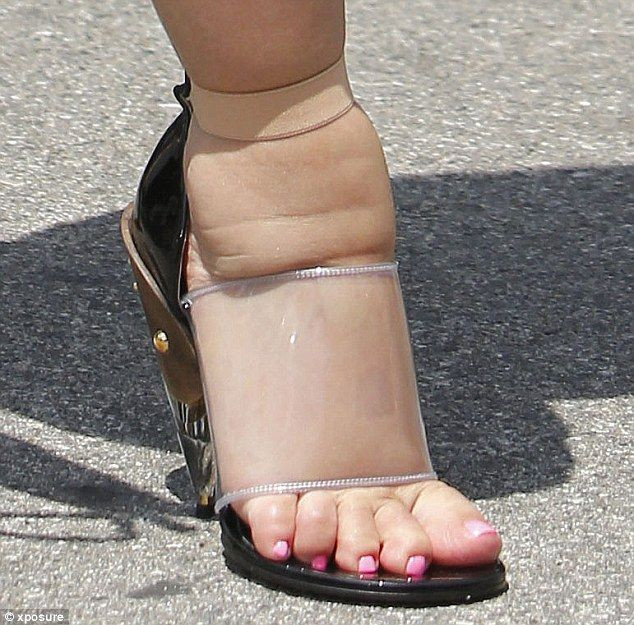
Many women experience foot changes during pregnancy. The size of the feet may increase and the arches may become flatter. Some women also notice instability in their feet or ankles. For some, these changes are temporary and pass after giving birth, but others notice permanent foot changes that affect the shoes they are able to wear.
One of the most serious cases was the much talked about change Kim Kardashian suffered during her first pregnancy. While Kim was pregnant with her daughter North West, she refused to wear maternity clothes and shoes, causing great discomfort to her feet and ankles. For more than one occasion, Kardashian, being a public figure, was the target of mockery and spoke about her swollen feet.

But why does pregnancy affect the feet? According to the American Orthopaedic Foot & Ankle Society, this happens due to multiple factors including weight gain and hormonal changes that occur in the musculoskeletal system.
"Normal pregnancy weight gain can cause changes in the way a woman walks and lead to instability, and fluid build-up in the lower extremities makes the feet larger," says Sudheer Reddy, MD, a foot and ankle orthopaedic specialist in Frederick, Md. "Hormonal changes also make the ligaments of the foot looser, which in turn affects arch height and foot length."

What can pregnant women do about uncomfortable foot changes? Foot and ankle orthopaedic specialists offer several suggestions:
1. "Compression stockings can help reduce swelling," says Reddy, "as can regular walking and low-impact exercise. Proper hydration and frequent calf stretching can also help reduce foot and ankle discomfort during pregnancy."
Compression apparel is the new way to relieve your legs of any pain or inflammation. Trusted and worn by over 200,000 healthcare professionals daily, ATN Compression Socks offers stylish and effective compression socks that will make your life a lot more comfortable!
Developed by a vascular nurse for people on their feet all day, these compression socks helps prevent formation of blood clots in lower legs, manages pain associated with varicose veins, clear lactic acid for quicker recovery, decreases muscle soreness, prevents swelling and increases circulation. Get 20% off with the discount code LOVEYOURLEGS.
2. Also to help reduce and/or prevent those annoying swollen ankles, avoid standing for long periods of time.
3. Prop up your feet when sitting and avoid crossing your legs.
4. Stretch often when sitting for long periods.
5. Lie on your left side when sleeping.
6. Drink as much water as you can.
7. Exercise regularly.
If you have a severe case, we recommend to visit a Foot and Ankle Orthopaedic Surgeon. They are medical doctors (MD and DO) who specialize in the diagnosis and treatment, both surgical and nonsurgical, of musculoskeletal disorders and injuries of the foot and ankle.
Their education and training consists of four years of medical school, five years of post-graduate residency and often a fellowship year of specialized surgical training. These specialists treat patients of all ages and perform reconstructive surgery for deformities and arthritis, treat sports injuries, and manage foot and ankle trauma.
To learn more about how feet change during pregnancy, visit the Foot Changes During Pregnancy page here.
© 2025 Latin Times. All rights reserved. Do not reproduce without permission.






